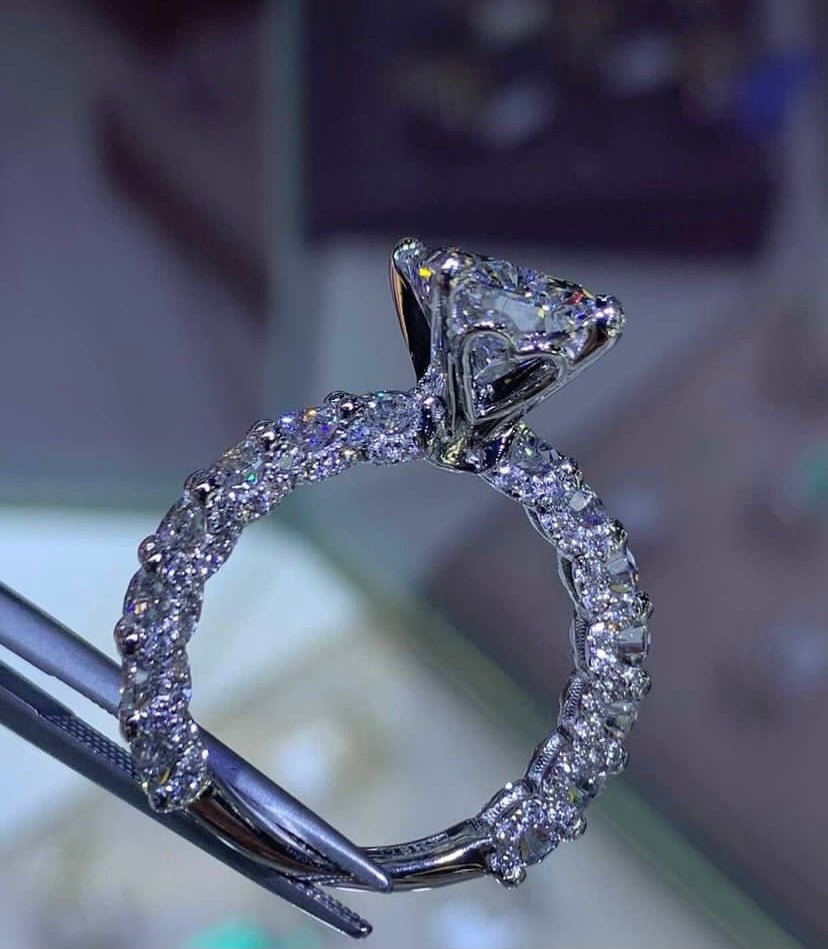With regards to the creation of engineered diamonds, two primary techniques dominate the business: HPHT VS CVD. The two methods offer novel advantages and are generally utilized in jewelry and industrial applications. However, understanding the distinctions among HPHT and CVD is essential for figuring out which technique best suits your necessities.
What is HPHT?
HPHT, or High-Strain High-Temperature, is a technique used to deliver manufactured diamonds that copies the natural diamond formation process. In this procedure, carbon is exposed to very high tensions and temperatures, similar to the circumstances tracked down profound within the Earth. The outcome is a diamond that is chemically and physically identical to natural diamonds. While considering HPHT vs CVD, it’s important to note that HPHT diamonds frequently show different variety characteristics and incorporations compared to those created by CVD.
What is CVD?
CVD, or Chemical Vapor Testimony, is a cutting edge strategy for creating manufactured diamonds that includes the statement of carbon atoms onto a substrate. This cycle happens in a controlled climate, where gases are acquainted and react with structure a carbon layer. After some time, this layer crystallizes into diamond. In the HPHT vs CVD debate, CVD diamonds are known for their virtue and ability to be delivered in larger sizes with less considerations, making them an appealing choice for customers.
The Course of HPHT Diamond Creation
The HPHT cycle starts with a carbon source, typically graphite, which is placed in a reactor. The reactor then applies outrageous tension, frequently surpassing 1.5 million pounds for each square inch, along with temperatures around 1,500 degrees Celsius. This climate facilitates the transformation of graphite into diamond. While examining HPHT vs CVD, it’s crucial to feature that man made diamonds can take days to weeks to frame, contingent upon the circumstances. The outcome is a diamond that can have special characteristics, like the presence of metallic considerations.
The Course of CVD Diamond Creation
CVD diamonds are created through an alternate interaction that includes the presentation of carbon-rich gases into a vacuum chamber. These gases, usually methane and hydrogen, are stimulated through microwave radiation or different means to encourage the carbon atoms to store onto a substrate, framing a diamond layer. The interaction can take a long time to months, allowing for command over the diamond’s properties, including variety and clarity. While comparing HPHT vs CVD, it’s important that CVD allows for more exact command over the diamond’s characteristics, bringing about exceptionally customized stones.
Quality Comparison: HPHT vs CVD
With regards to quality, HPHT and CVD diamonds have their particular advantages. HPHT diamonds will generally be more inclined to variety variations, frequently appearing in shades of yellow or brown. However, they can also be delivered in vibrant varieties through unambiguous treatments. In contrast, CVD diamonds are frequently vapid and can be designed to show explicit shades. Hence, while evaluating HPHT vs CVD, customers ought to think about their inclinations for variety and clarity in manufactured diamonds.
Applications of HPHT and CVD Diamonds
Both HPHT and CVD diamonds have many applications, from jewelry to industrial purposes. HPHT diamonds are much of the time utilized in slicing tools and abrasives because of their hardness. Meanwhile, CVD diamonds are increasingly popular in hardware and optics, thanks to their exceptional virtue and thermal conductivity. In the continuous conversation of HPHT vs CVD, understanding these applications can assist purchasers and ventures with making informed choices about which sort of diamond to decide for their particular requirements.
Cost Comparison: HPHT vs CVD
Cost is a significant factor in the HPHT vs CVD comparison. Generally, HPHT diamonds will quite often be more affordable to create, primarily because the innovation has been around longer and the cycles are more established. Alternately, CVD diamonds can be more expensive because of the advanced innovation and gear expected for their creation. However, costs can vary significantly based on size, quality, and market demand. It’s essential to compare costs while considering the one of a kind features of HPHT and CVD diamonds.
Environmental Impact: HPHT vs CVD
In the conversation about HPHT vs CVD, the environmental impact of each technique is increasingly relevant. The two cycles are more sustainable than traditional diamond mining, however they contrast in energy utilization and asset use. HPHT requires significant energy input for high strain and temperature, while CVD typically utilizes less energy however includes complex hardware. As shoppers become all the more environmentally cognizant, understanding these impacts can impact purchasing choices among HPHT and CVD diamonds.
Conclusion: Making the Decision Among HPHT and CVD
Ultimately, the decision between HPHT vs CVD will rely upon individual inclinations and prerequisites. The two techniques produce excellent manufactured diamonds, however they accompany their one of a kind characteristics, advantages, and sticker costs. Whether you focus on variety, clarity, cost, or environmental impact, understanding the nuances of each strategy can assist you with making an educated choice while purchasing engineered diamonds. As innovation keeps on advancing, the differentiations among HPHT and CVD diamonds will probably turn out to be considerably more articulated, making it essential for shoppers to stay informed.




